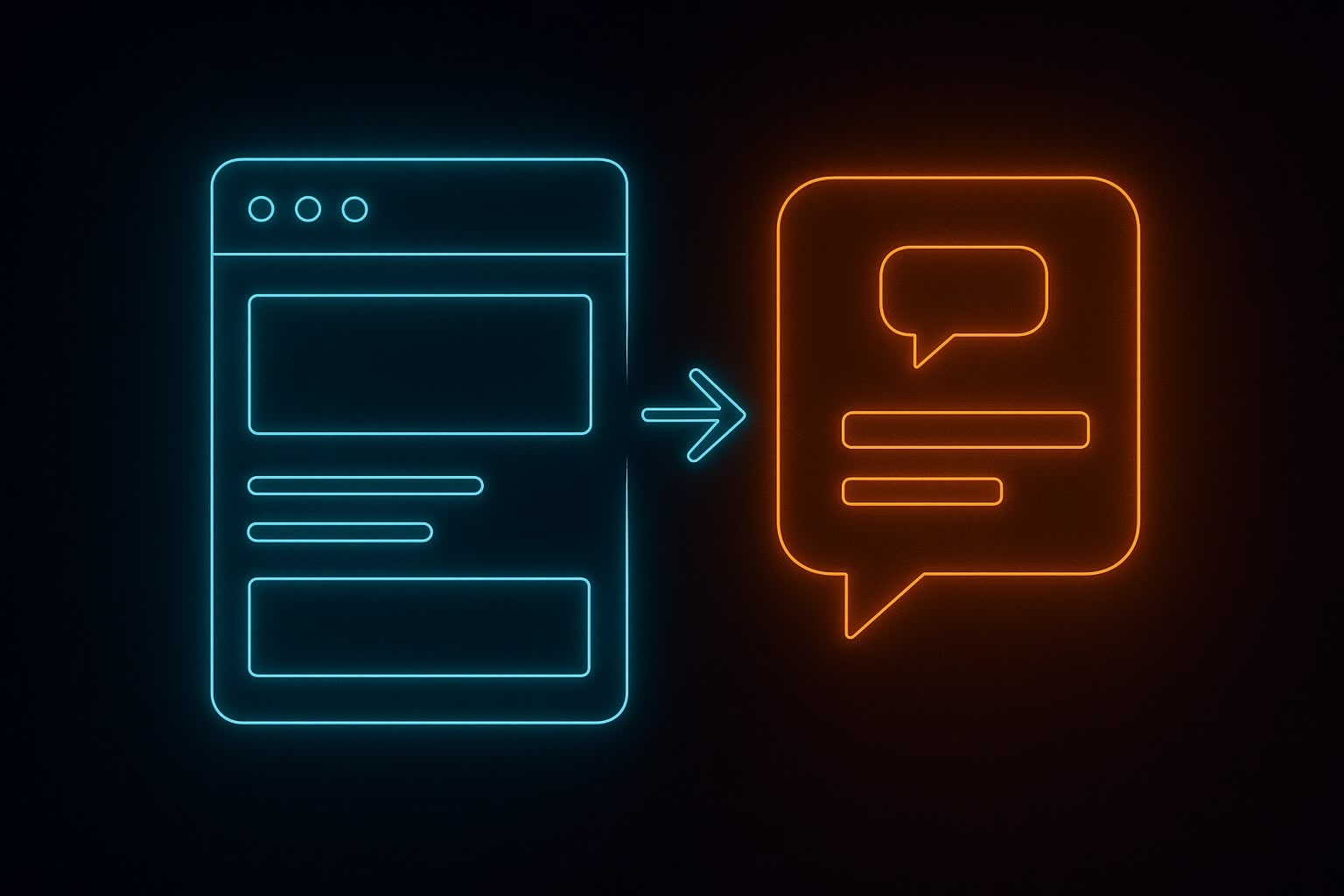From Monolithic to Headless to Siteless

Over the last two decades, the architecture of the web has evolved in cycles. First came monolithic platforms, where everything—backend logic, templating, frontend rendering—was bundled in a single box. Then, the rise of APIs and frontend frameworks ushered in the headless revolution, separating content from presentation, and offering unprecedented flexibility.
But what if the next leap isn’t just another evolution of how we build websites…
What if the website itself disappears?
A Siteless Web?
This idea may sound strange at first. After all, everything on the internet revolves around websites, right?
But think about how people are already interacting with content today. Increasingly, they aren’t typing URLs or browsing menus. They’re asking ChatGPT to plan their vacation. They’re telling Claude to summarize product specs. They’re asking Gemini to compare laptops and recommend the best one. The interface is not a screen—it’s a conversation.
And this is just the beginning.
What if your next customer never visits your homepage?
What if your product is discovered, compared, and purchased—entirely within an AI app?
That’s the essence of the siteless future.
From Headless to Siteless
The headless architecture gave us decoupling: frontend and backend could evolve independently. It let us use React, Vue, or Svelte to build snappy, app-like experiences. We embraced APIs, CMSs like Contentful or Sanity, and deployed static sites on platforms like Vercel and Netlify.
But in a siteless world, even the frontend disappears. The content, product catalog, business logic—they still exist. But the interface is gone. Or rather, it’s been outsourced to someone else’s AI agent.
That doesn’t mean your infrastructure becomes less important. Quite the opposite. It means your backend has to be:
- Programmable – everything should be accessible via structured APIs
- Searchable – optimized for semantic queries, not just keywords
- Composable – ready to serve multiple interfaces, including those you don’t control
- Interoperable – integrated with the AI ecosystems that are becoming new user gateways
You’re no longer just building a site. You’re building a service layer that other systems will invoke.
What Changes for Users?
For users, this shift brings frictionless convenience. Instead of navigating 10 product pages, applying filters, reading reviews, and hunting for a promo code, they can ask a question like:
“Find me a black leather backpack under 200€, preferably from a sustainable brand, and have it shipped by Friday.”
And in seconds, get a result, approve the purchase, and move on. No login, no cart, no checkout flow.
This isn’t science fiction. Shopify is already experimenting with AI agents. Klarna has an AI-powered shopping assistant. Amazon is rumored to be testing conversational interfaces for Prime users.
The change is happening—quietly, but fast.
What Changes for Us (as Builders)?
This new paradigm forces us to rethink everything:
- Do we still need landing pages? Or should we focus on structured metadata and AI-optimized documentation?
- Should we invest in UX? Or in better APIs, faster product feeds, and vectorized content for LLM consumption?
- Are we still optimizing for SEO? Or for vector databases and fine-tuned models that “read” our product catalogs?
In this world, your product feed is your new homepage. Your API schema is your UI. And your brand voice must be encoded in prompt instructions.
Siteless ≠ Contentless
Let’s be clear: siteless doesn’t mean invisible. It means ambient. Content is still key—but it has to be machine-readable, context-rich, and distributed.
Markdown docs, product JSONs, reviews with embeddings, support flows structured as graphs—these are the new building blocks.
You may not control the interface anymore, but you control the knowledge. And in an AI-first world, knowledge is leverage.
A Call to Rethink
If you’re leading a tech team, a product org, or an eCommerce brand, start asking:
- What parts of our business are still coupled to a specific interface?
- Can our systems respond intelligently to natural language queries?
- Are we building for humans browsing—or for agents acting on behalf of humans?
Because the next revolution won’t be about faster sites.
It’ll be about sites that don’t need to exist.